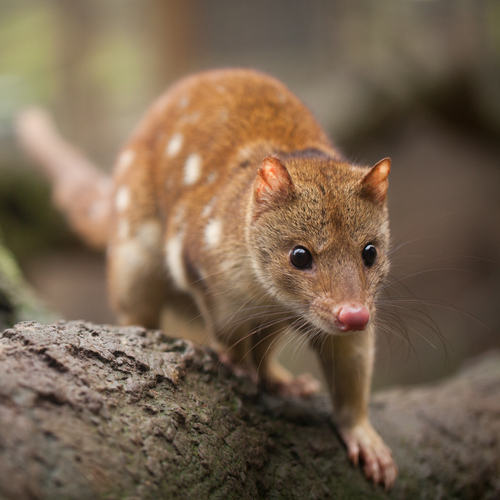In a conservation catch-22, efforts to save quolls might endanger them
Conservationists are stuck in a catch-22: In trying to save some species, the would-be protectors may be giving the animals an evolutionary disadvantage. A new study describes how efforts to protect the endangered northern quoll, a spotted, kitten-sized marsupial native to Australia, by placing a population on a threat-free island may have actually undermined a key survival instinct.
After 13 generations — just 13 years — in isolation, the northern quolls (Dasyurus hallucatus) had lost their fear response to native predators, researchers report June 5 in Biology Letters.
“Evolution can happen very rapidly” for animals with fast breeding times, says evolutionary biologist Rick Shine of the University of Sydney, who was not involved in the study.
Separating endangered species from predators is a common conservation technique, sometimes taking place in captive-breeding programs in zoos or fenced enclosures or on isolated islands. The approach allows a species to build up its population before eventually being reintroduced to the wild.
Populations of northern quolls have been drastically reduced in recent decades by invasive poisonous cane toads (SN Online: 2/3/14). In 2003, the Australian Northern Territory Government tried to preserve the quolls in part by moving 45 of them to toad-free Astell Island, off mainland Australia’s northern coast.
In 2016, biologist Christopher Jolly of the University of Melbourne and colleagues tried to reintroduce some quolls from Astell to the mainland. But the effort was quickly halted after dingoes and feral cats killed many of the new arrivals (SN Online: 2/11/15).
In trying to figure out what happened, the researchers tested the fear responses of four populations of quolls: wild mainland quolls, island-born quolls and offspring from both groups. Quolls from each group were given boxes of mealworms; some had no scent and some were tainted with the scent of either feral cats or dingoes. While the wild quolls shied away from the predator-scented worms, the island quolls slurped the worms down. The quoll babies in each group showed the same behavior as the adults, suggesting the lost fear response was not learned but had evolved over 13 generations.
The study’s findings may have implications for other animals as well, as Australia grapples with how to conserve an increasing number of threatened and endangered species. “For many of Australia’s mammals, the future is fenced,” says Alexandra Carthey, an ecologist at Macquarie University in Sydney who was not involved in the study.
There may be a few other solutions. Quolls could possibly be trained to avoid the cane toad, and then wouldn’t need to be taken from their native habitat, according to a study by Jolly and colleagues published last October in Austral Ecology. Or, a small number of predators could be added to the isolation locations — not enough to threaten the quolls’ proliferation, but enough to put the fear back into them.

